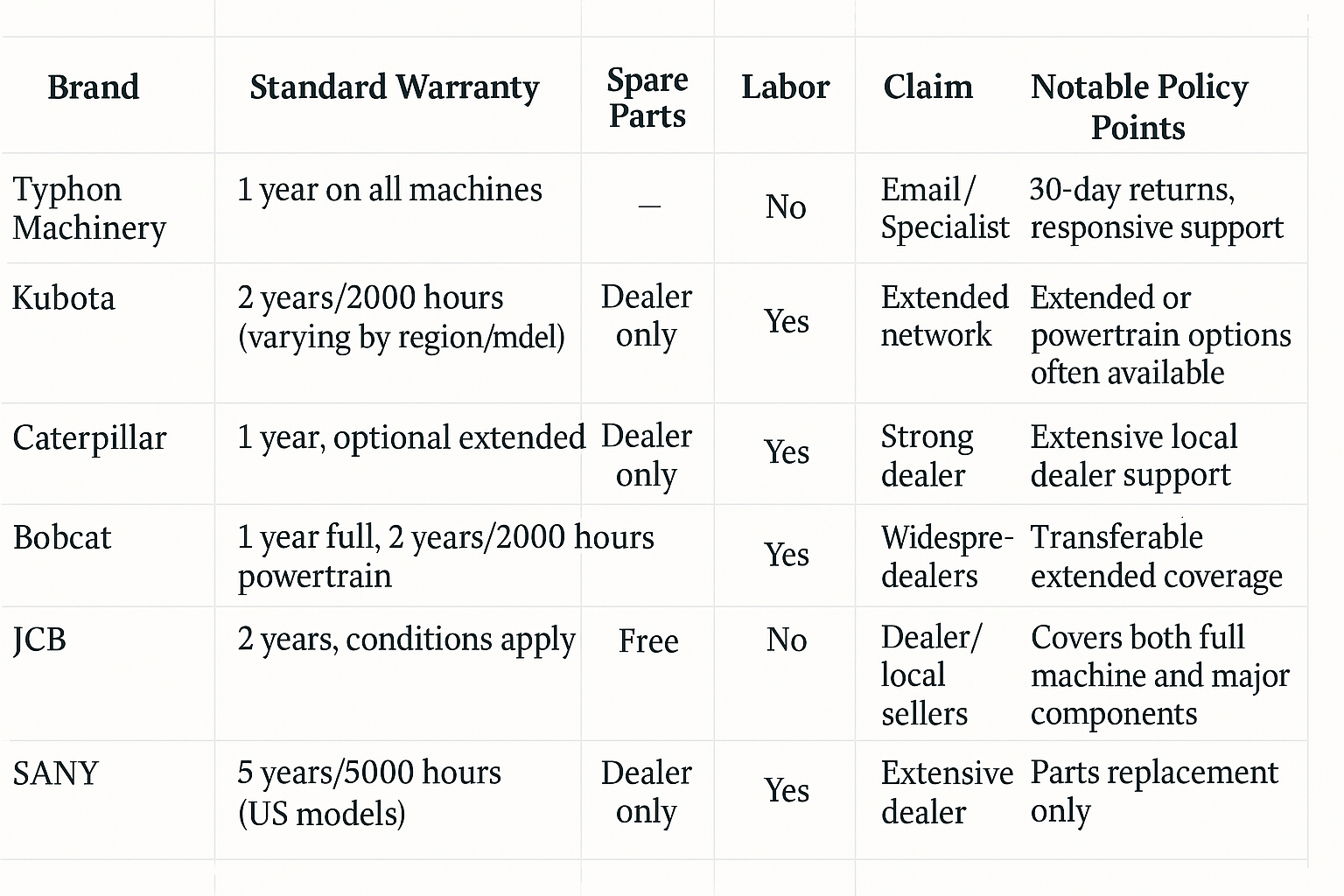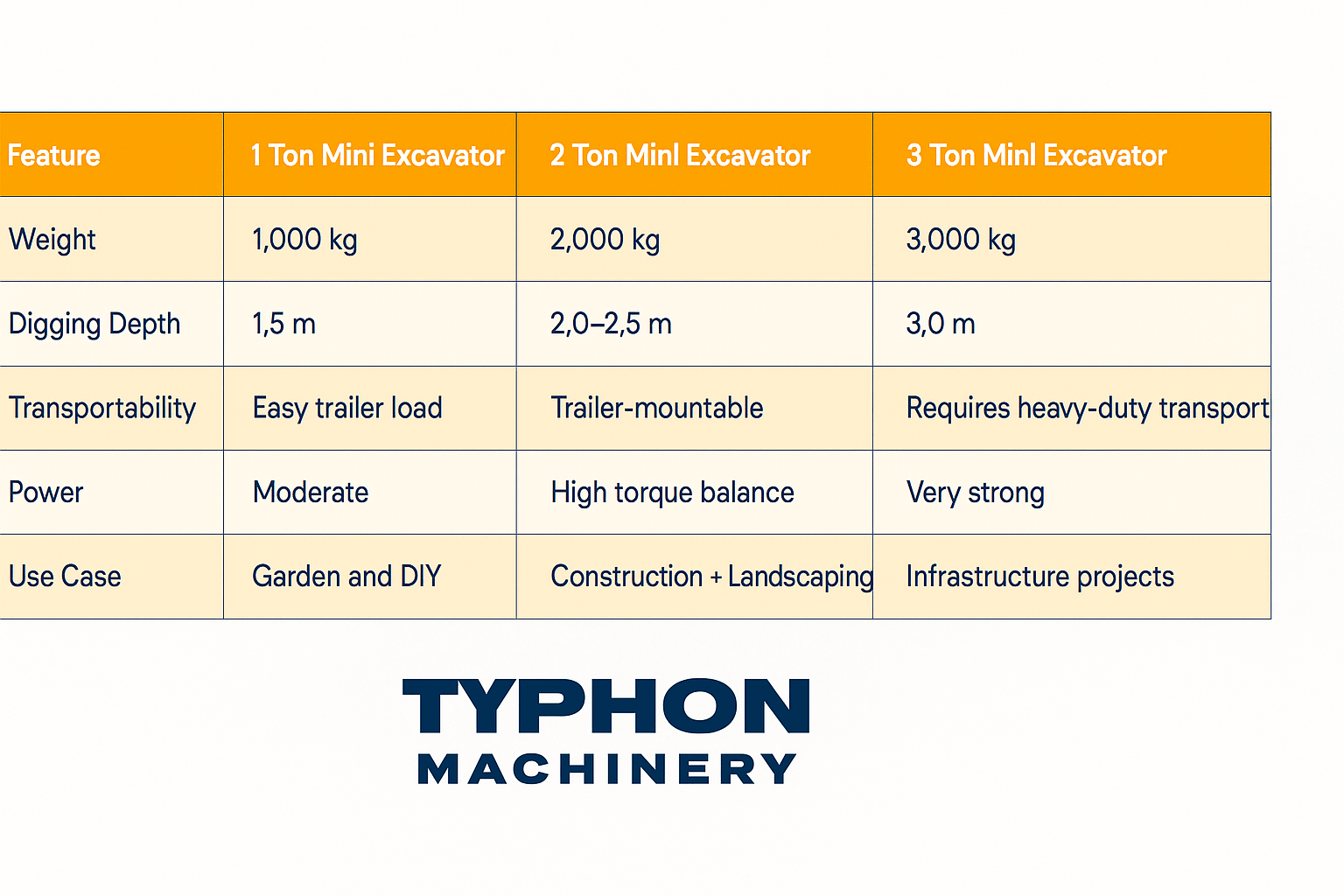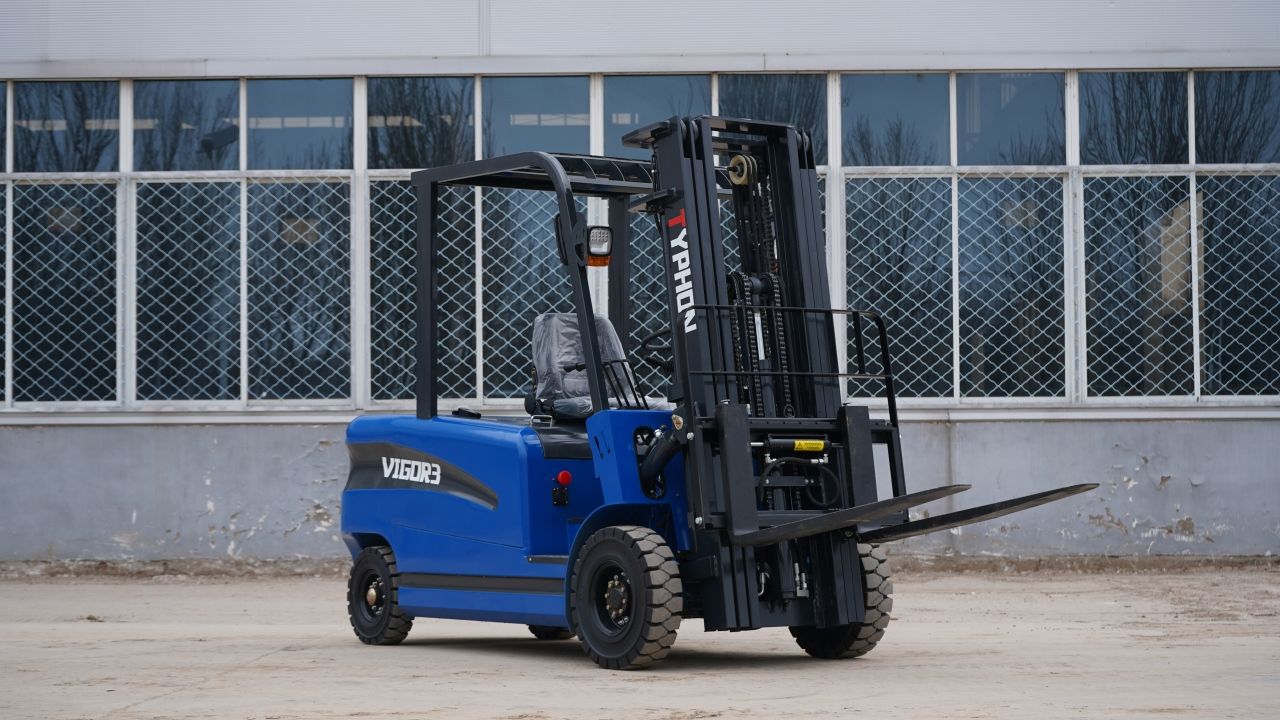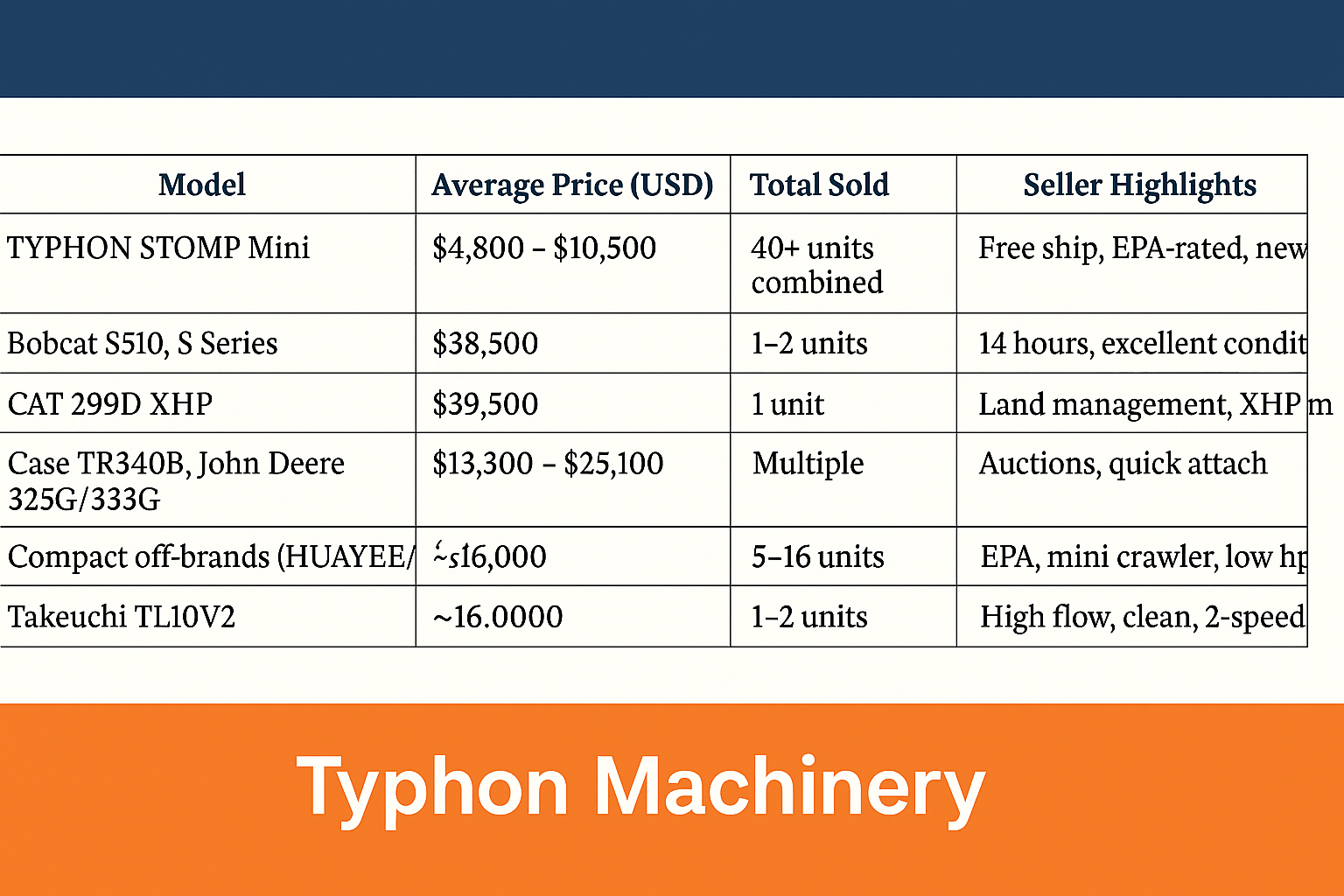This article brings the chapter on using a small excavator to a close.
The mini excavator is a mechanical device of compact size that can not only be moved in various directions but is also very useful for performing different jobs in hard-to-reach areas. The curiosity of the construction and landscaping industries toward the mini excavator and its subsequent usage have made it a must-have tool.
In this Article, we will explore the intricacies of using a mini excavator for various job types, while also delving into its potential and advantages. Besides, you can find practical tips on using this piece of equipment efficiently and safely here.
- 1. Earthworks
- 2. Light demolition
- 3. Landscaping
- 4. Roadworks
- 5. Excavation and levelling
- 6. Installation of drainage systems
- 7. Pruning and bush clearance
- 8. Construction and renovation projects
1. Earthworks
Soil or ground works are required to get the foundation ready for future construction or landscaping activities. These works are not only about the ground but also about leveling soil, excavating trenches, and moving the earth from place to place.
The first core application of a mini-excavator is excavation, also known as earthworks. Here are some examples of excavating applications:
- Footings excavation: Excavators enable the building of an accurate and solid portion below the ground level of houses, garages, and other structures.
- Digging trenches: Whether it is laying electric cables, pipes, or drainage, the mini excavator excels at digging deep, narrow trenches. The first layer of soil is often difficult to dig up because of the presence of roots.
- Pits and drainage: The versatile machine is also capable of digging pits for the purpose of catching rainwater and thus this also reduces water wastage in the construction area.
How to handle the mini excavator
- Site preparation: To begin with, you will need to mark the area you are going to work at and make sure that it is clear of debris and other obstructions.
- Positioning the mini excavator: Park the mini excavator on a hard, smooth flat surface.
- Using the hinged arm: Lower the arm and adjust the angle of the bucket for better grip.
- Movement: The first rule of using the excavator is to control your speed and avoid sudden departures. Remember to hold the steering lever when you are directing the machine while keeping your eyes on the movement of the other machines you are working with.
2. Light demolition
A mini excavator is good at doing light demolishing tasks, such as:
- Demolition of walls and structures: Because of its power and ease of operation, it can destroy brick walls, partitions and other light structures without causing collateral damage to the surrounding environment.
- Debris removal: When the demolition is over, the debris can be removed by the mini excavator, and the site can be cleaned and prepared for new work.
How to handle the mini excavator
1. Area preparation:
During the preliminary stage of the operation, identify the structures to be mauled, inspect the types, quantities, and locations of the materials to be used, and ensure that there are no cables or pipes underground. The range of the work should be outlined through barriers and workers and the people around informed of it.
2. Demolition of structures:
Try to touch lightly the structure at the beginning to know how strong it is. As the response to tapping comes, you can gradually increase the power of the hits. Crack the concrete by using the hydraulic hammer or the bucket along the length of the concrete. When bits of concrete have been broken off, pick them up with the help of the bucket and displace them.
3. Cleaning and disposal:
Deploy the container to gather the trash and move it to the dump or another area set aside for waste disposal. If needed, take out the recyclables. Subsequent to the demolition job, conduct an on-site check to ensure that there are no hazardous remains. In case it is necessary, lay the ground for the next steps of the project.
3. Landscaping
Honestly, one of the main advantages of landscaping works is the use of a mini-excavator.
- Creating gardens: A variety of different garden elements, such as pathways and flowerbeds, can be easily put in place by an operator using a mini-excavator as a soil mover.
- Building terraces: The mini excavator can prepare foundations for wooden or stone terraces, which ultimately will have a good base.
- Planting: A tree auger can be mounted to the excavator to make holes for the planting of trees, bushes, and flowers.
Also, an excavator can be significantly used for landscaping purposes to create gardens, pathways, and water pools.
How to handle the mini excavator
4. Area preparation:
Delimit your project area with the help of stakes or rope.
5. Digging of trenches:
Using the bucket, you can dig the trenches necessary for the installation of irrigation systems or the construction of paving foundations.
6. Placement of materials:
Clean the bucket and then move the material like gravel or earth to the place where you want it.
7. Levelling:
The levelling blade, should one desire perfection, could be moved back and forth to make the surface flat.
4. Roadworks
The mini excavator’s versatility allows widespread use on all the stages of the road construction process.
- The excavator is commonly seen at road construction sites.
- During the excavation process, the mini excavator has a lot of applications.
- Excavation and road construction are the main industries for the mini excavator.
Check your project area first. Then start the actual steps of the project. Give a thorough…
Laying of pipelines: It’s proficient at creating ditches to lay water, gas or electric pipelines, so you can do infrastructure easily.
- Road repairs: In cases of dire need, various road sections can be restored with the help of the mini excavator by specifically locating and extracting those damaged. However, I can’t understand, road repairing should be done under proper guidance and with the proper consultation of professionals through some well-planned methods; otherwise, it may lead to direct or indirect accidents.
5. Excavation and levelling
The mini excavator is particularly suitable for excavation and levelling work:
- Soil excavation: For strength or earth-layer removal purposes, the mini excavator can be used for a quick and efficient clearance.
- Leveling the ground: The tool can even out any space like gardens, sports fields, or other surfaces.
When we excavate we dig earth to construct pits, foundations or ponds.
How to handle the mini excavator
1. Tool selection:
Always remember to utilize a recommended bucket that is suitable for soil type and depth.
2. Excavation techniques:
- Straight line excavation: Insert the bucket into the ground and then drag it to yourself at a 30-degree angle.
- Wave excavation: This is a quicker way to collect the surface area’s garbage and soil; all you have to do is go back and forth.
3. Debris management:
Dispose of rubble at a safe distance to avoid any risk of collapse.
6. Installation of drainage systems
There is an ever-present need to hire mini excavators to lay a new drain.
- Trenches for drains: The tool allows for the digging of neat gutters, hence avoiding water problems at the site during construction. Now it has been made very easy these days, even we can make the use of a small excavator to install a natural rainwater harvesting system on our small roof or the harvesting area.
- Drainage pits: Pits made by a mini-excavator direct rainwater away from buildings and infrastructure.
- Digging pits for foundations or septic tanks is a common task for mini excavators.
How to handle the mini excavator
1. Inspection of the ground:
Before digging, make sure there are no underground pipes or cables.
2. Digging technique:
Lower the bucket to the centre of the marked area and dig in circles to gradually widen the pit.
3. Depth monitoring:
Use visual markers or a spirit level to ensure that the desired depth is achieved.
7. Pruning and bush clearance
When it comes to landscape maintenance, the mini excavator can help with:
- Removing tree stumps: Thanks to special attachments, it can uproot tree stumps, allowing optimum reuse of space.
- Bush clearance: It can be used to clear overgrown land, making sites more accessible.
How to handle the mini excavator
1. Inspection of the ground:
Look closely at the work area to see any trees, shrubs, or brush that need to be cut down. Put up cones or barriers around the work area to keep others from being hurt.
2. Digging technique:
Use a regular bucket to pick up and transfer plant detritus. A broadening bucket can help you remove undergrowth more widely. You can use an attachment like a hydraulic shear to chop thick branches in specific situations.
Check that the small excavator is on solid ground. Use the stabilizers to keep things safe while you work. Find a spot where you can see the work area well and watch out for things that can get in your way.
Pruning
1. Cutting of branches:
- Identifying branches: Find the branches that need to be chopped and figure out how big thTo use the bucket, gently pull the branches down and break them with it.
- Take them. You might need a cutting attachment for branches that are thicker.
2. Collection of debris:
- Loading: After cutting the branches, collect the debris in the bucket and move it to a designated area for disposal.
- Stacking: Put the trash in mounds to make it simpler to load and move.
Bush clearance
1. Brush removal:
- Pulling plants: Use the bucket to grab and pull up tiny trees and vegetation. Don’t hurt the soil around it.
- Moving ahead: Move forward gently and carefully so you don’t tip the machine over.
2. Debris removal:
- Loading: Use the bplace trash in designated skips or other locationsrt for it.
- Sorting materials: If you need to, separate recyclable things like wood from green garbage.
8. Construction and renovation projects
For building and remodeling, the small excavator is a must-have:
- Site renovation: It cleans up sites, gets rid of old materials, and gets the ground ready for future developments.
- Building things: The tiny excavator may be used for many parts of construction, such digging cellars or basements.
How to handle the mini excavator
Use a regular bucket to dig, level, and dig up dirt. If you want to level and smooth surfaces, you should use a leveling bucket. For harder materials, you might want to use a hydraulic hammer or a bucket with teeth.
Excavation and digging:
- Preliminary marking: Mark the places you want to dig or excavate before you start.
- To dig, lower the bucket into the ground and drag it toward you to pick up the dirt. To keep from losing control, move slowly and carefully.
Leveling the ground:
- Using the leveling bucket: After digging, level the ground using the leveling bucket. To get a smooth finish, slide sideways.
Moving of materials:
- Loading and moving: Put things like gravel, sand, or concrete into the bucket and then move them to the places where they need to be unloaded.
- Handling debris: Use the bucket to pick up and transfer debris during remodeling work.
Renovation of structures:
- Controlled demolition: Use the bucket to take down pieces of buildings that are already there, but be careful not to hurt the parts you want to keep.
- Backfill: After building or remodeling, fill the trenches and holes with the right material.
Conclusion
In conclusion, the small excavator is a useful and adaptable instrument that can do a lot of different tasks in the construction and landscaping fields. The tiny excavator is a must-have on modern job sites, whether you’re doing earthworks, demolition, landscaping, or rUsing it maximizes your work time and ensures good results.outcomes. So, anyone who wishes to do a lot of different chores quickly should get a compact excavator.










